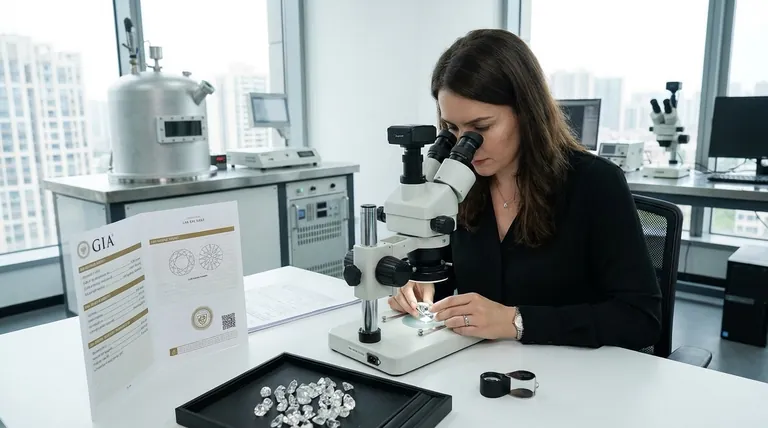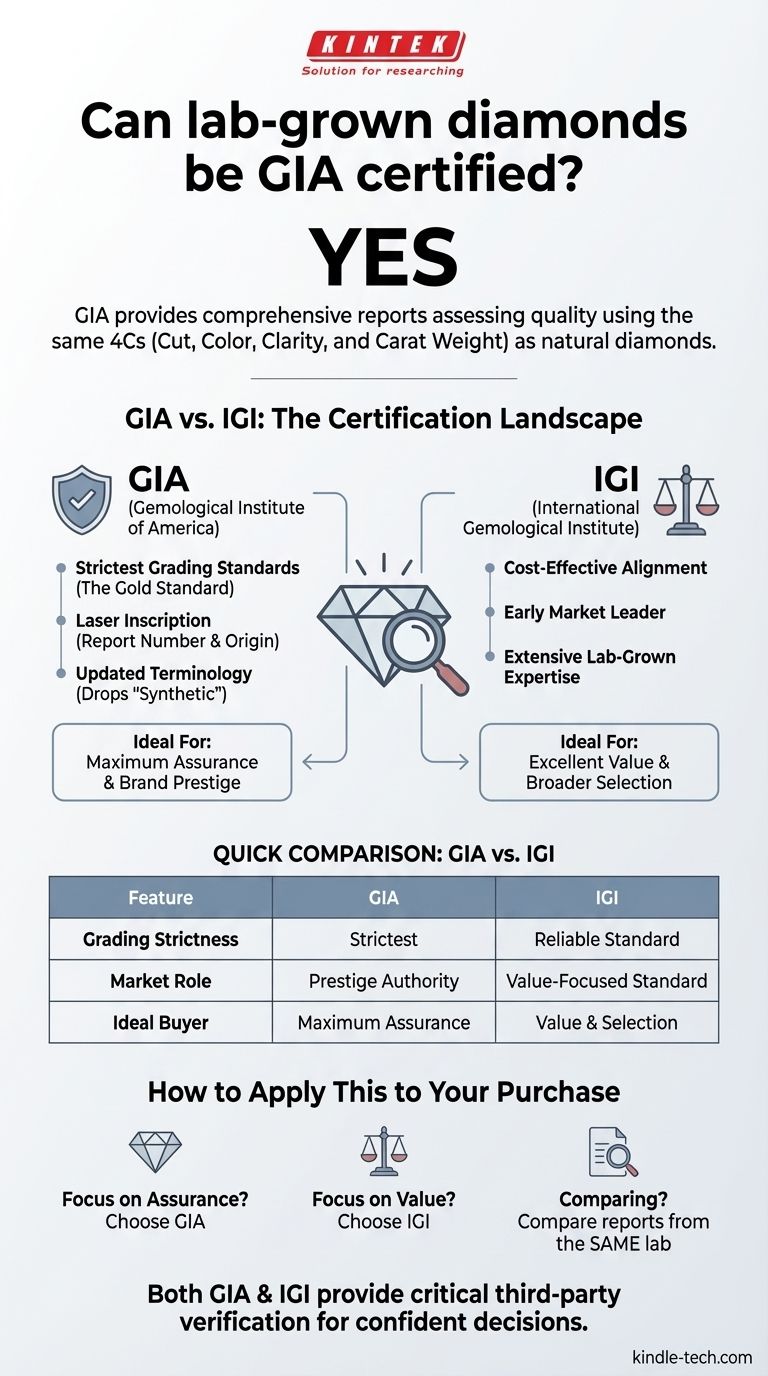Yes, lab-grown diamonds can be and are certified by the GIA (Gemological Institute of America). GIA provides comprehensive reports for laboratory-grown diamonds that assess their quality using the same 4Cs (Cut, Color, Clarity, and Carat Weight) as natural diamonds. However, you will often find that lab-grown diamonds are more commonly certified by other reputable labs, such as the IGI (International Gemological Institute), for specific market and economic reasons.
The core issue is not one of possibility, but of prevalence. While GIA offers top-tier certification for lab-grown diamonds, the industry often prefers IGI because its cost structure better aligns with the value-focused nature of the lab-grown market.

The Role of a GIA Report for Lab-Grown Diamonds
GIA is widely considered the world's foremost authority in gemology. Its reputation is built on decades of consistency, research, and stringent grading standards for natural diamonds. This expertise now fully extends to lab-grown stones.
What a GIA Report Guarantees
A GIA Laboratory-Grown Diamond Report provides a full, objective assessment of the diamond's quality. It includes specific grades for color and clarity and, for round brilliant cuts, a grade for the quality of the cut.
A Mark of Origin
Crucially, the report clearly states that the diamond is laboratory-grown. This ensures complete transparency for the consumer. GIA also laser-inscribes the report number and a statement of origin on the diamond's girdle.
A Modern Stance on Terminology
In 2019, GIA updated its reporting to align with modern standards, officially dropping the term "synthetic" from its reports. This change reflects the fact that lab-grown diamonds have the same chemical, physical, and optical properties as natural diamonds.
Why IGI is So Common in the Lab-Grown Market
If GIA is an option, it's fair to ask why a majority of lab-grown diamonds on the market come with a report from IGI. The answer is rooted in market history and economics.
The Impact of Cost
GIA certification is generally the most expensive in the industry. This premium cost is easily absorbed in the higher prices of natural diamonds but can represent a more significant percentage of a lab-grown diamond's final price.
Alignment with Value
The primary appeal of a lab-grown diamond is achieving a larger or higher-quality stone for a more accessible price. Because IGI provides reliable, respected certification at a lower cost, it allows manufacturers and retailers to maintain a more competitive final price for consumers.
An Early Market Leader
IGI was one of the first major labs to embrace the grading of lab-grown diamonds on a large scale. This gave them a significant head start, allowing them to become the established and trusted standard for much of the lab-grown industry.
Understanding the Practical Differences
Both GIA and IGI are highly respected, independent gemological laboratories. For the consumer, a report from either organization serves the essential purpose of verifying a diamond's characteristics.
A Question of Strictness
Historically, GIA has maintained a reputation as being the strictest and most consistent grader. This is the primary reason for its "gold standard" status in the natural diamond world.
IGI's Proven Expertise
IGI has deep and extensive experience specifically with lab-grown diamonds. They have graded millions of them and have become the de facto authority within this specific segment of the market. A report from IGI is considered reliable and trustworthy.
The Bottom Line for Buyers
Ultimately, the certificate's purpose is to provide an independent, third-party confirmation of what you are buying. Both GIA and IGI fulfill this role effectively. The choice between them often comes down to the retailer's sourcing and pricing strategy.
How to Apply This to Your Purchase
Your final decision should be guided by confidence in the diamond itself, which is confirmed by its certificate.
- If your primary focus is maximum assurance and brand prestige: A GIA-certified lab-grown diamond provides the backing of the world's most recognized gemological authority.
- If your primary focus is excellent value and broad selection: An IGI-certified diamond is the industry standard for lab-grown stones, offering reliable verification from a highly reputable lab.
- If you are comparing two diamonds: The most effective comparisons are made between stones graded by the same laboratory to ensure you are evaluating them against the same standard.
Ultimately, a certificate from either GIA or IGI provides the critical third-party verification you need to make a confident and informed decision.
Summary Table:
| Certification Body | Key Features | Ideal For |
|---|---|---|
| GIA | Strictest grading, high prestige, laser inscription, updated terminology (no 'synthetic') | Buyers prioritizing maximum assurance and brand recognition |
| IGI | Cost-effective, early market leader, extensive lab-grown diamond expertise | Value-focused shoppers seeking reliable verification and broader selection |
Ready to find the perfect certified lab-grown diamond for your needs?
KINTEK specializes in providing high-quality lab equipment and consumables that support the precise synthesis and analysis of lab-grown diamonds. Whether you're a manufacturer, researcher, or retailer, our tools ensure accuracy and efficiency in your processes.
Let us help you achieve excellence in your lab. Contact us today to discuss how our solutions can meet your specific requirements!
Visual Guide

Related Products
- HFCVD Machine System Equipment for Drawing Die Nano-Diamond Coating
- 915MHz MPCVD Diamond Machine Microwave Plasma Chemical Vapor Deposition System Reactor
- CVD Diamond Domes for Industrial and Scientific Applications
- Laboratory CVD Boron Doped Diamond Materials
- CVD Diamond Cutting Tool Blanks for Precision Machining
People Also Ask
- How do you calculate coating coverage? A Practical Guide to Accurate Material Estimation
- How is diamond coating made? A Guide to CVD and PVD Methods
- What is the process of coating deposition? A Step-by-Step Guide to Thin Film Engineering
- What machine is used to make lab-grown diamonds? Discover the HPHT & CVD Technologies
- What is microwave plasma CVD? A Guide to High-Purity Diamond and Material Synthesis



















